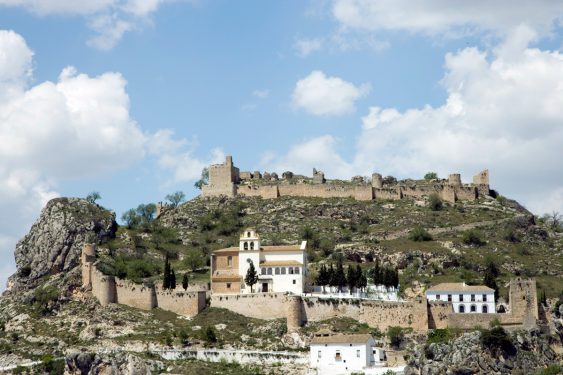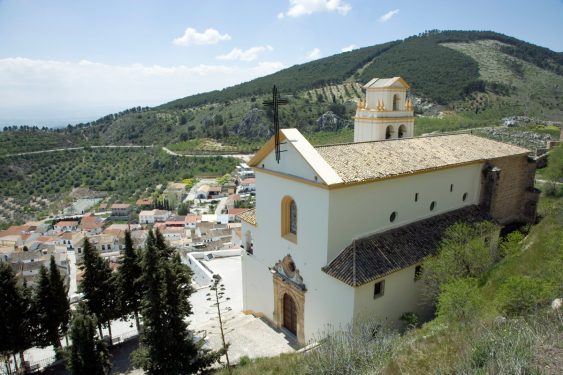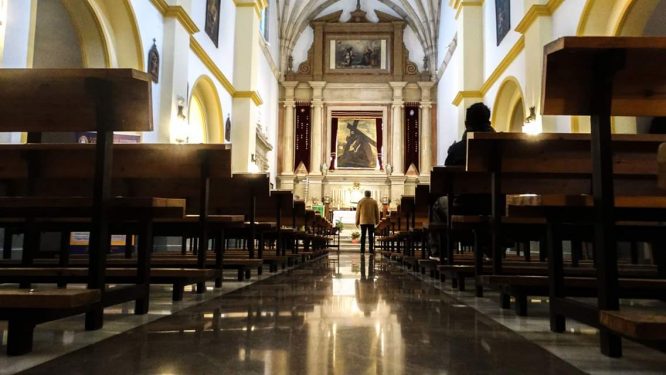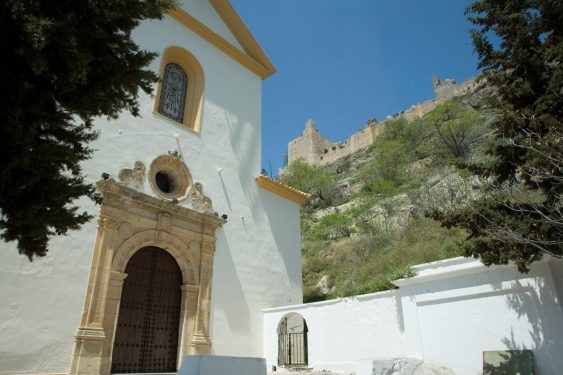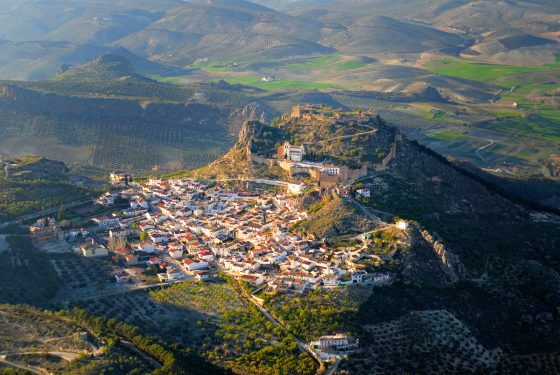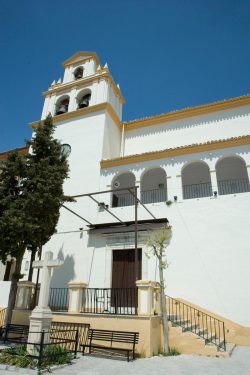The shrine and pilgrimage of the Cristo del Paño of Moclín is linked to ‘Yerma’ and ‘The pilgrimage of the cuckolds’, a ballet by Gustavo Pittaluga and plot by Lorca.
The church of the Encarnación in Moclín, where the shrine of Cristo del Paño is located, is linked to a major work by Federico García Lorca, Yerma, and to The pilgrimage of the cuckolds, a ballet by Gustavo Pittaluga based on a verbal argument by Lorca and Cipriano Rivas Cherif which was premiered on 9 November 1933 at the Teatro Calderón in Madrid by the company of Encarnación López Júlvez, La Argentinita, music by Gustavo Pittaluga and set by Alberto Sánchez.
The church, like all the old churches of the diocese of Granada, was founded in 1501 after the conquest of Granada by the Catholic Monarchs. It was built on the site of an ancient mosque. Construction began in 1505, although the design of the main chapel, attributed to Diego de Siloé, had to wait until 1543.
The name of the Christ comes from one of its healing specialties: eye cataract, also called ‘paño’ (cloth) disease in Spanish.
The building underwent several vicissitudes so that its current appearance is contemporary and dates back to 1940. The last modification is dated 1949 under the direction of the architect Francisco Prieto-Moreno.
The presbytery is presided over by the image of the Cristo del Paño, an oil painting of 2.64 by 2.21 meters that, according to a legend impossible to prove, was used by the soldiers of the Catholic Monarchs as a standard during the Reconquest and then given to the population as a gift of gratitude.
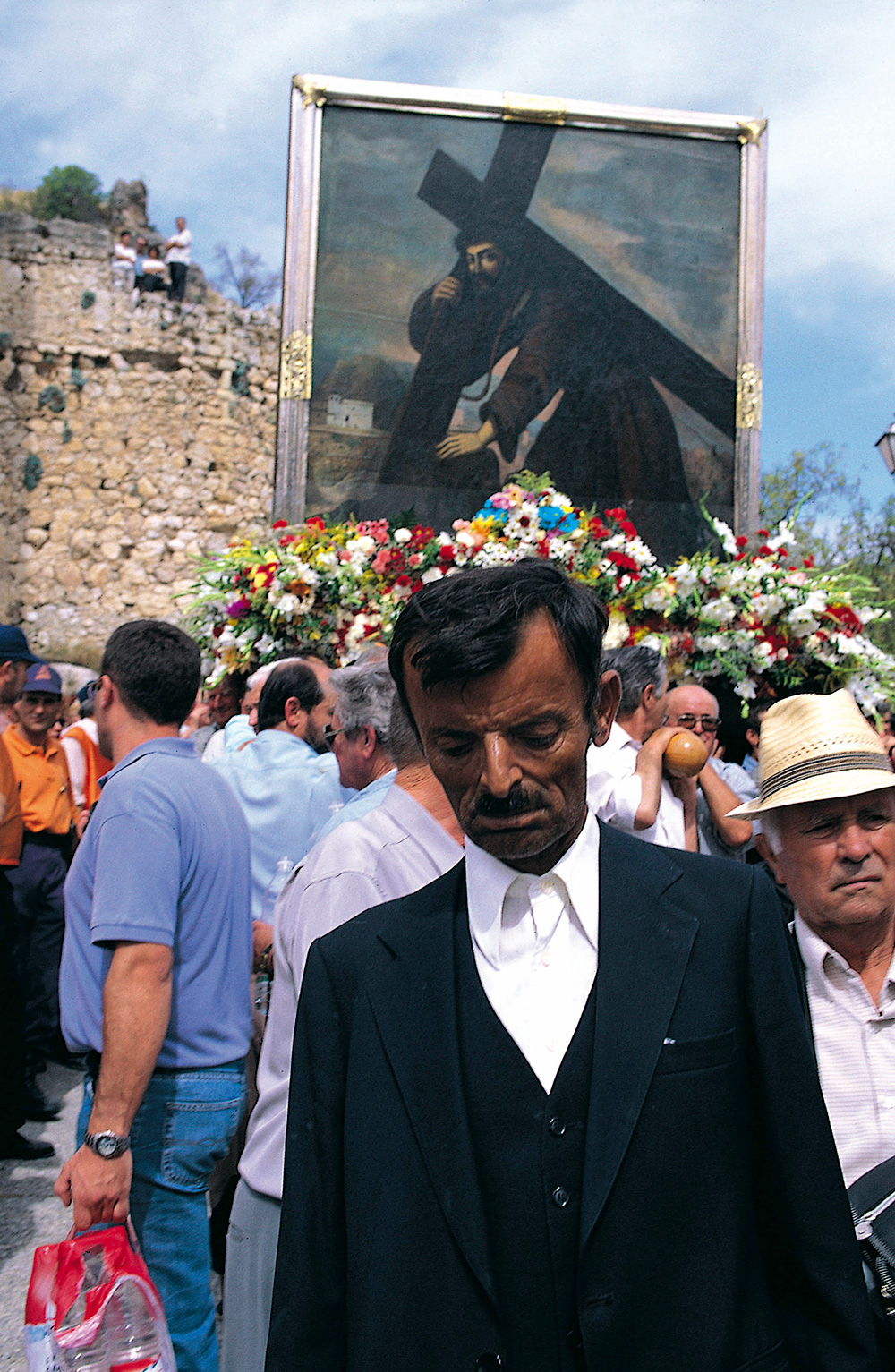
The painting, which represents a Christ with the cross on his back, of great veneration in all the villages of the Eastern Mountains, the Vega and the bordering municipalities of Jaén, has been restored so many times that it is practically impossible to establish both its origin and its original appearance. However, the iconographic and devotional repercussion of this Christ has been and is enormous, to the point of having a specific altar in the Cathedral of Granada.
The Church authorized the cult in 1695 but banned it between 1957 and 1971 after a priest cracked it and poured over it a bucket containing lime to end the frauds committed by some pilgrims taking advantage of the festival.
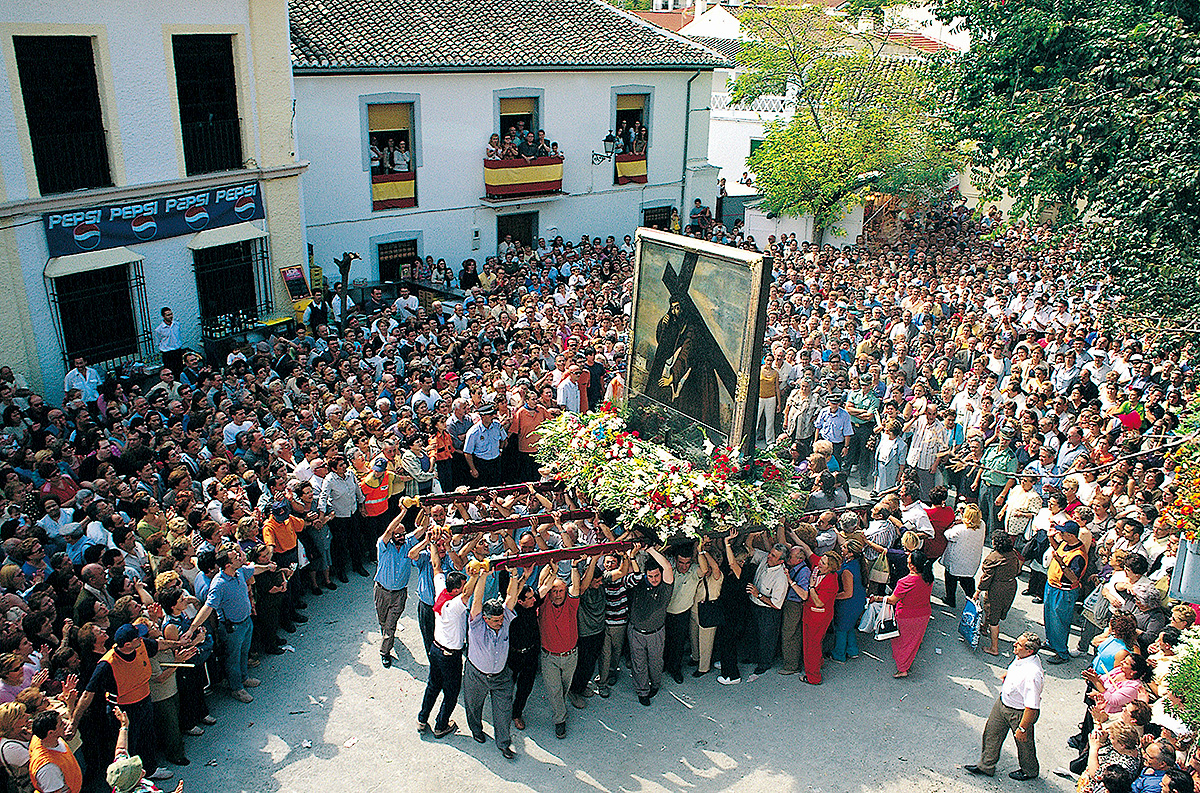
The pilgrimage was reinstated and continues to be an attraction for thousands of people who come every October 5 to ask for miracles of all kinds to the canvas, which is carried on a platform through the streets of the town. The name of the Christ comes from one of its healing specialties: eye cataract, also called ‘paño’ (cloth) disease in Spanish. In addition, the devotees usually rub handkerchiefs and cloths of all kinds on the canvas, which are then applied to the damaged parts of the body to repair them.
The pilgrimage of the Cristo del Paño inspired the procession that tragically culminates Yerma. The play was written between 1933 and 1934. Its premiere was already shrouded in the hostile atmosphere that preluded the Civil War. The friendship of Margarita Xirgu with Manuel Azaña, in whose drama The Crown, she had starred, and his commitment to the cause of the Republic provoked a threat of rebellion among the conservative public who attended the first performance at the Teatro Español on December 29, 1934.
The García Lorca family had a lithograph of the Cristo del Paño hanging in their house in Valderrubio. Federico did attend the pilgrimage on occasion, although against the will of his father, as Isabel García Lorca recalled in her memoirs and suggested by Marcelle Auclair.
The younger sister specifies that she never attended and highlights some phrases taken from Yerma to underline the aspects that she believed to be less exemplary of the procession according to the moral criteria of those times. “I have seen more than forty barrels of wine at the back of the hermitage,” says the girl in the third act. Another character, the Old Pagan Woman, says: “Here women come to meet new men and the saint performs the miracle”. Isabel also recalls another phrase from the play: “A hundred leagues around you hear nothing but terrible words”.
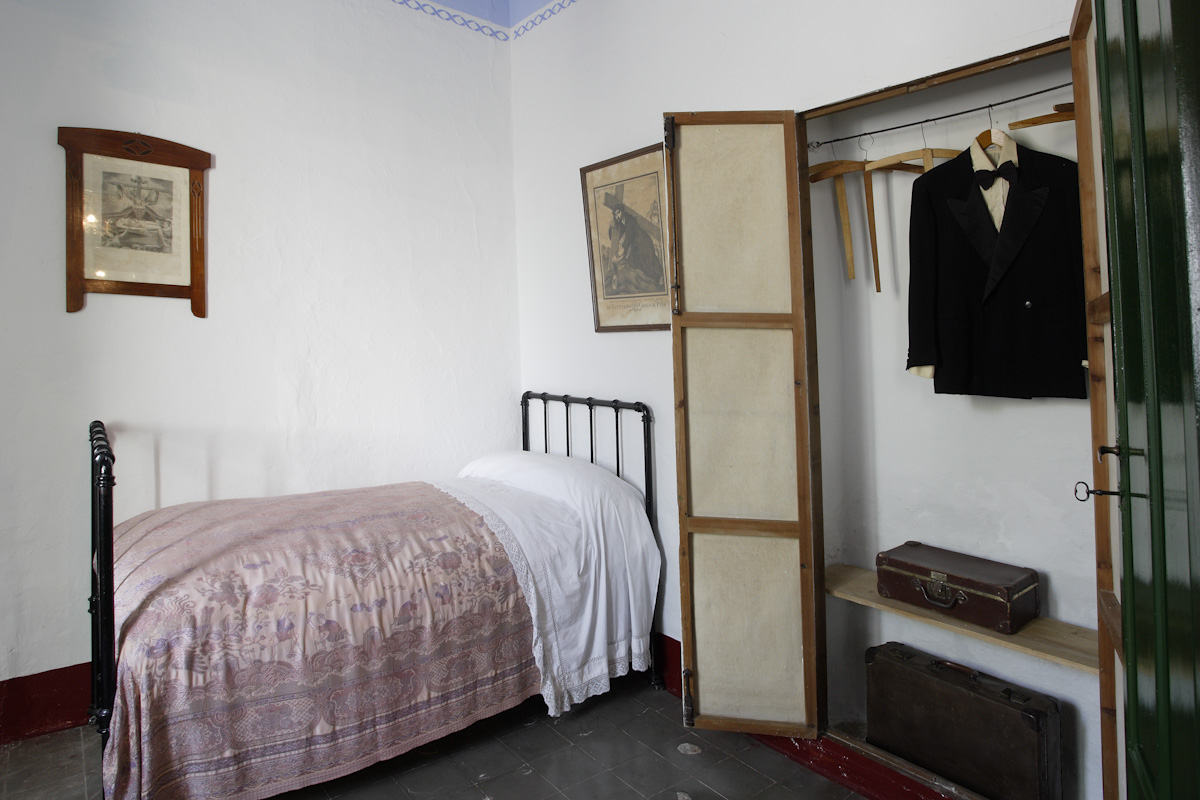
Francisco García Lorca reveals in his memoirs that he did not attend the pilgrimage either, although he admits that “our bedroom” in the countryside was presided over by the “True Image of the Most Holy Cristo del Paño”, as it read at the foot of the reproduction.
Francisco remembers Federico “many times” reflecting on the pagan characteristics of the image. And he says: “I must confess that Federico’s imagination went further than mine”. The pagan aspect that hovers over Yerma is indisputable. The final dance of the pilgrimage act, between a man and a woman, comes from a dance from northern Spain of Bacchic origin.
The scene of the washerwomen (Act II, Tableau I) in Yerma is inspired by the women Lorca used to meet on his walks as a youngster at the La Carrura fountain, which no longer exists, on the banks of the river Cubillas, between Pinos Puente and Valderrubio.
In the play, the washerwomen sing songs in a carefree tone alluding to infecundity: “Yo planté un tomillo [I planted thyme], yo lo vi crecer./ [I saw it grow], / El que quiera honra [He who wants honor] / que se porte bien (Ríen) [let him behave well (they laugh)]”. Or they make cruel allusions: “Those macho women are like that: when they could be making lace or apple jams they like to climb on the roof and walk barefoot along those rivers”.
According to Marcelle Auclair, who knew Lorca well during the time he wrote Yerma, the playwright used to comment, between truths and jokes, that the painting of the Cristo del Paño covered another pagan. “Looking at it well,” he said, “you can see, under the thin layer that covers it, the hooves and the matted hair of a faun”.
Already in Madrid, Lorca spoke with his friends of the pilgrimage and the musician Gustavo Pittaluga decided to compose a ballet with a plot by Lorca and Cipriano Rivas Cherif. There was an attempt to perform the work in 1927 at the Students’ Residence with the backdrop of Alberto Sánchez, but it was finally suspended.
The symphonic version of The Pilgrimage of the Cuckolds was first performed at the Teatro de Cámara in Madrid in 1930. The danced version premiered on 8 November 1933, three weeks after Lorca left for Argentina, at Madrid’s Teatro Calderón, featuring Encarnación López, La Argentinita, and her sister Pilar.
Ian Gibson suggests that the failed attempt to perform the ballet in 1927 at the Students’ Residence led the poet to write a drama on the theme of the barren woman, the future Yerma.
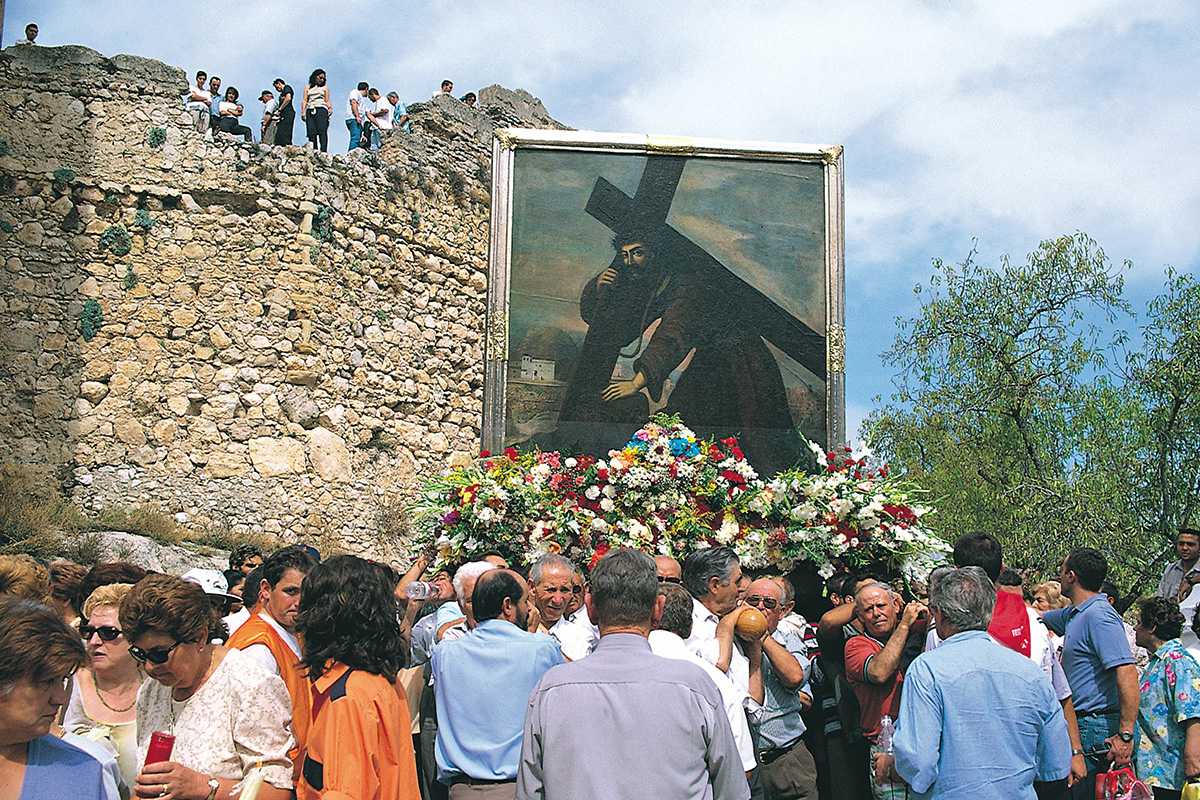
José Mora Guarnido, a great friend of Federico’s since 1917, did attend the pilgrimage of the Cristo del Paño before leaving for Uruguay in 1923. In his memoirs he recalls: “For three or four days, at the beginning of October, all the villages of the Vega are filled with a strange rumor: a cry repeated by hundreds of voices, men or women, old people or children, who greet the pilgrims of Moclín shouting: `Jerk!, Jerk!’ The pilgrims carry in silence the intimate drama of their infertility”.
Yerma. (Como soñando) Yerma. (Like dreaming)
¡Ay qué prado de pena!
[Oh what a meadow of sorrow!]
¡Ay qué puerta cerrada a la hermosura,
[Oh what a closed door to beauty,]
que pido un hijo que sufrir y el aire
[I ask for a son to suffer and the air]
me ofrece dalias de dormida luna!
[offers me dahlias from the sleeping moon!]
Estos dos manantiales que yo tengo
[These two springs that I have]
de leche tibia, son en la espesura
[of warm milk, they are in the thicket]
de mi carne, dos pulsos de caballo,
[of my flesh, two horse pulses,]
que hacen latir la rama de mi angustia.
[that make the branch of my anguish beat.]
¡Ay pechos ciegos bajo mi vestido!
[Oh blind breasts under my dress!]
¡Ay palomas sin ojos ni blancura!
[Oh doves without eyes or whiteness!]
¡Ay qué dolor de sangre prisionera
[Oh what a prisoner blood pain.]
me está clavando avispas en la nuca!
[wasps are inflicting on me in the back of my neck!]
Pero tú has de venir, ¡amor!, mi niño,
[But you have to come, love, my child,]
porque el agua da sal, la tierra fruta,
[because water gives salt, earth gives fruit,]
y nuestro vientre guarda tiernos hijos
[and our belly keeps tender children]
como la nube lleva dulce lluvia.
[like the cloud brings sweet rain.]
- Federico García Lorca. Complete Works II. RBA-Instituto Cervantes. Madrid, 2006.
- Francisco García Lorca. Federico and his World. Alianza Tres, Madrid 1990.
- Ian Gibson, Federico García Lorca. From New York to Fuente Grande (1929-1936). Grijalbo. Barcelona, 1987.
- José Mora Guarnido. Federico García Lorca and his World. Losada. Buenos Aires, 1958.
- Lorca´s location
- Sanctuary of the Cristo del Paño of Moclín
- current location
- Church of the Encarnación of Moclín
- ADDRESS
- Iglesia, s/n
- Web
- http://www.santuariocristomoclin.es/
- Telephone
- 958 403 032
- contacto@santuariocristomoclin.es
- DETAILS OF THE VISIT
The Sanctuary of the Cristo del Paño, located in the Church of the Encarnación in Moclín, is open to be visited all year round.
Please, check the Sanctuary website for information on opening hours.
